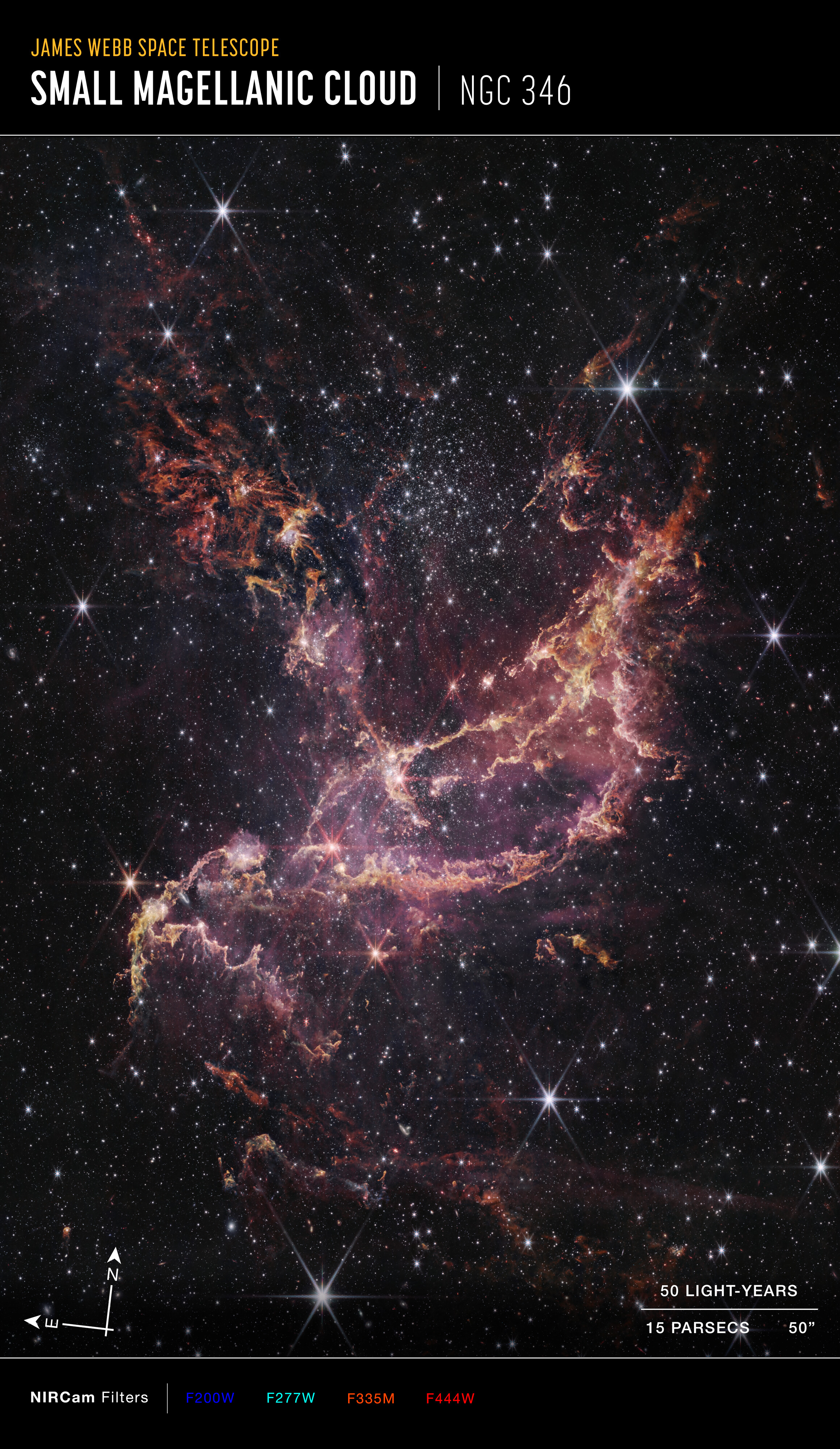
Dusty sub-solar mass star formation in NGC 346
JWST observations of NGC 346, a star-forming region in the metal-poor Small Magellanic Cloud, reveal a substantial population of sub-solar mass young stellar objects (YSOs) with IR excess. We have detected more than 33,000 sources across six NIRCam filters with deep, high-resolution imaging, where ongoing low-mass star formation is concentrated along dust filaments. From these observations, we construct detailed near-IR colour-magnitude diagrams with which preliminary classifications of different YSO classes are made. For the youngest, most deeply embedded objects, JWST/NIRCam reaches over 10 magnitudes below Spitzer observations at comparable wavelengths, and two magnitudes fainter than HST for more evolved pre main sequence sources, corresponding to ∼0.1~\Msun. For the first time in an extragalactic environment, we detect the full sequence of low-mass YSOs at all evolutionary phases. Furthermore, evidence of IR excess and accretion suggests that the dust required for rocky planet formation is present at low metallicities.
NASA release
The Life and Times of Dust in NGC 6822
NGC 6822 lies about 1.5 million light-years away, and is the Milky Way’s nearest galactic neighbour that is not one of its satellites. It has a low metallicity, meaning that it contains low proportions of elements that are not hydrogen and helium. Metallicity is an absolutely key concept in astronomy, in part because elements other than hydrogen and helium are largely produced by stars over their lifetimes. Therefore, in the very early Universe (before the first generation of stars had been born, lived and died) everything had very low metallicity. This makes contemporary low-metallicity objects (like NGC 6822) objects of interest for understanding how processes such as the evolution of stars and the life cycle of interstellar dust likely occurred in the early Universe. This was the motivation for these observations of NGC 6822 with Webb: to better understand how stars form and how dust evolves in low-metallicity environments.
 ESA JWST
ESA JWST Pitcure of the Month 07/2023


